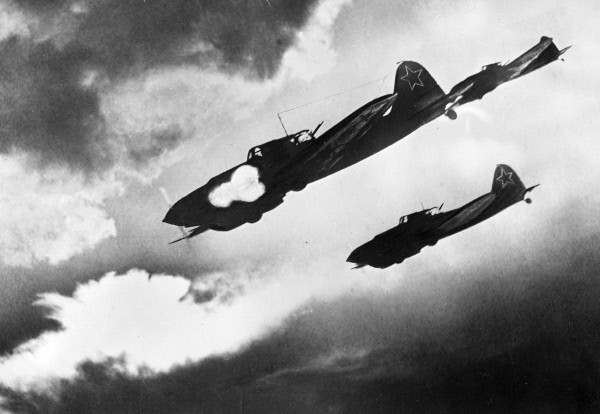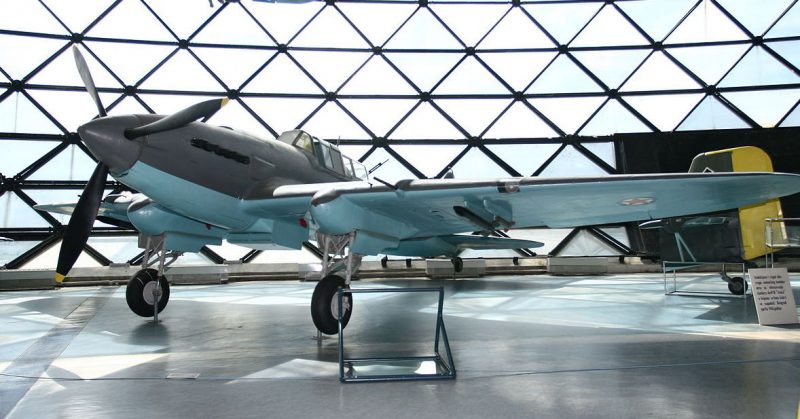On the 27th January 1944, the Red Army broke through the blockade around Leningrad and opened a passage to the besieged city. Supporting the ground forces were hundreds of aircraft that attacked the German troops to ensure that they secured the airspace around the city. One of the planes used in this battle was the Ilyushin Il-2 Sturmovik, and one of these sturdy attack aircraft crashed into a lake just south of Leningrad. The crew was saved but the plane sank, and now 70 years later it is being restored in Arizona.
The Sturmovik was one of the most plentiful planes built during WWII with around 36,000 being built by the Soviets with the first ones rolling off the production line in 1939. It was affectionately nicknamed the ‘flying tank’ as its frontal armor was just as thick as that of a tank. This slow, low flying plane was one of the most important planes of WWII, and Josef Stalin is reputed to have told the factory building the planes that the red Army needed them as much as air to breathe and bread to eat!
The construction of the Sturmovik was unique, and even though the example at the museum has spent almost 70 years at the bottom of a lake, it is still remarkably well preserved. Around the cockpit and engine was a thick steel plate giving the front of the plant a boiler-like look rather than the svelte aluminum lines of other attack planes of the era. This armor was imperative to protect the pilot as the plane was designed to fly low, around 70 meters from the ground, and very slow as it flew over the German lines dropping bombs. This method of attack exposed the pilots to being shot at by anything and everything from infantrymen to anti-aircraft guns to tanks.
This thick, impenetrable armor at the front made the plane very heavy, so the wings and tail were made of wood, in an attempt to lighten the overall weight and to save metal. Using wood made the plane lighter so more bombs could be carried on each run. The Sturmovik, at 11 meters long, was designed to carry one pilot, but it was not long before a glaring design flaw came to light. The Sturmovik was vulnerable to attack from the rear, through the wooden section of the plane.

In response to this, the Soviets undertook a simple modification. They cut a hole in the rear, inserted a canvas seat and a gun and plopped in a gunner to protect the rear of the plane. The rear gunner of a Sturmovik had a perilous existence with only the thinnest piece of wood to protect him or her from bullets, shrapnel, and shells, so their life expectancy was not good. Due to the high rate of deaths in the gunner’s seat, the rear gunners for the Sturmoviks were recruited from the prison camps.
Around 12,000 of these planes were shot down by the Germans which is why so few of them exist today. These planes flew in formation and accounted for heavy losses on the German side. They destroyed armored vehicles, trucks, ground troop installations and even heavily armored tanks. They were commonly used in a battle tactic known as the ‘Circle of Death,’ in which a team of Sturmoviks would fly in a circle and one at a time they would peel off, dive down and deploy their weapons before rejoining the circle. This incessant bombardment would continue until the target was destroyed or their ammunition was finished. This tactic proved to be extremely successful.
The basic design of a heavily armored attack aircraft continued to be used by aircraft designers around the world. The American A10 Thunderbolt is still in the air today as is the Russian Su-25, and the ancestry of both these aircraft can be traced back to that first flying tank known as the Sturmovik.
There is only one example of this type of aircraft flying today, but it does not have an original engine. The plane at the Pima Air and Space Museum will not be a flying example, and it will be used as a static display, BBC News reported.
These aircraft played an important role in the relief of Leningrad as well as many other battles along the Eastern Front and, from a historical perspective, it will be important to have it once again on display.
